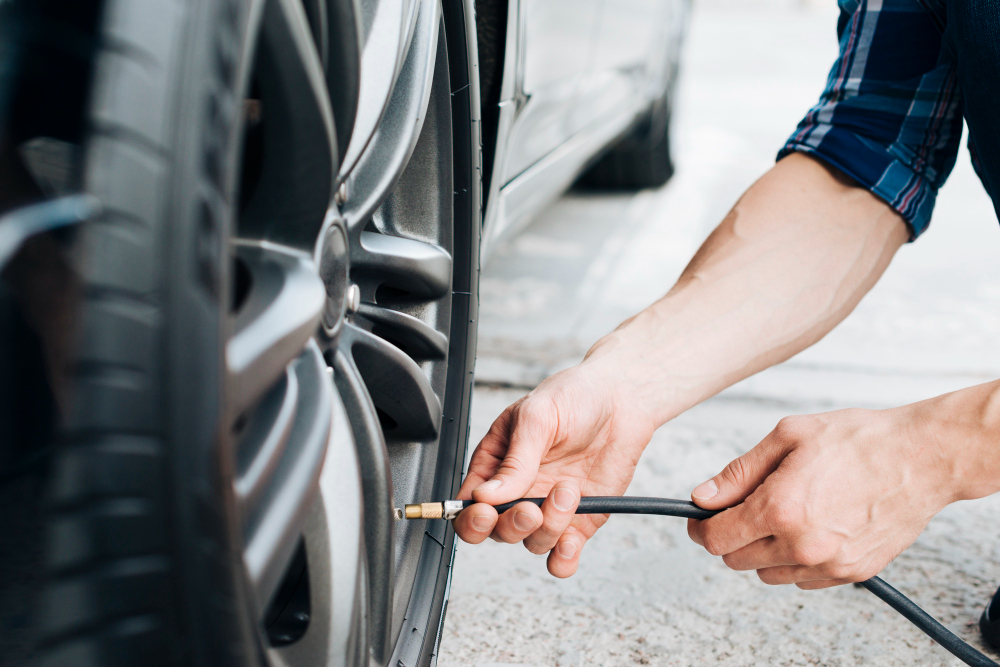How Often Should You Replace Your Tires and Signs It’s Time to Upgrade

Your vehicle’s tires are the unsung heroes of your journeys. They handle miles of wear and tear, endure various weather conditions, and quite literally keep you on the road. But how often should you replace your tires? And what are the telltale signs that it’s time to upgrade?
This guide unpacks everything you need to know about tire replacement to ensure your safety, optimize performance, and get the most out of your investment. Plus, if you're seeking mobile auto repair in Orlando, FL, we've got you covered.
How Often Should You Replace Your Tires?
The General Rule of Thumb
Most tire manufacturers and auto repair experts recommend replacing your tires every 6 years, irrespective of tread wear, with 10 years being the absolute limit. However, this general guideline can vary depending on your driving habits, road conditions, and the type of tires you're using.
Factors That Influence Tire Lifespan
- Driving Habits
Do you frequently brake hard or make sharp turns? Aggressive driving accelerates tire wear. Similarly, city driving, with its start-and-stop nature, can wear tires quicker than highway cruising.
- Weather Conditions
Florida’s hot climate can take a toll on your tires. High temperatures cause tires to age faster, especially if your vehicle is exposed to direct sunlight for prolonged periods.
- Tire Type and Quality
- High-performance tires for sports cars typically offer better traction but might not last as long as all-season tires.
- Premium tires cost more upfront but tend to deliver better longevity than budget options.
- Proper Maintenance
Regular tire rotation, alignment, and maintaining proper tire pressure can extend the life of your tires.
Signs It’s Time to Replace Your Tires
Even if your tires don’t hit the 6-year mark, certain signs indicate it’s time for an upgrade. Ignoring these could lead to compromised safety and performance.
1. Tread Depth is Too Low
Legally, tires should have at least 2/32 of an inch of tread. Here’s how to check this yourself with the penny test:
- Place a penny with Lincoln’s head pointing down into the tread.
- If you can see the top of Lincoln’s head, it’s time to replace your tires.
For Florida drivers often dealing with rainy conditions, more tread depth is recommended to prevent hydroplaning. Consider replacing tires when tread is below 4/32 of an inch for better traction on wet roads.
2. Cracks or Bulges Are Visible
Cracks in the sidewalls or bulges on the surface of the tire are signs of structural damage. These issues can lead to blowouts, putting you and others on the road at risk.
3. Uneven Tire Wear
Uneven wear patterns often indicate a problem with your suspension, alignment, or tire pressure. For example:
- Excessive wear on the outside edges might mean you're under-inflating your tires, while center wear suggests over-inflation.
Notice uneven wear? This is a sign to check your tires immediately or risk premature replacement down the line.
4. Vibration While Driving
Feeling excessive vibrations while driving? While some vibrations are normal on certain road surfaces, consistent vibrations may hint at tire balance issues, uneven wear, or internal damage.
5. Expiration Date
Tires have an expiration date! Check the DOT number on the sidewall. The last four digits indicate the week and year of manufacture (e.g., 3120 means the tire was made in the 31st week of 2020). Replace any tire older than 6 years, regardless of use.
Why Timely Tire Replacement Matters
Safety Comes First
Worn-out tires significantly reduce your control over the vehicle, leading to longer braking distances, increased risk of hydroplaning, and reduced traction in emergencies.
Better Fuel Efficiency
Under-inflated or worn tires can increase rolling resistance, causing your vehicle to consume more fuel. Replacing tires can improve efficiency and reduce trips to the pump.
Prevent Expensive Repairs
Driving on damaged or old tires can harm your suspension and wheels, leading to costly repairs. Proper maintenance is an investment in your vehicle’s longevity.
Pro Tip for Orlando Drivers
Living in Orlando presents unique challenges for your tires. Between high heat, sudden rain, and endless commutes, your tires are working overtime. Ensure regular inspections to keep your vehicle road-ready.
Want to skip the hassle? Call a mobile auto repair service in Orlando, like Johnny On The Go, to bring tire expertise right to your driveway.
What to Look for in New Tires
1. Tire Size and Specifications
Refer to the manufacturer’s recommendations in your vehicle manual. Buying the right size ensures optimal performance and safety.
2. Seasons and Weather
- All-Season Tires: Great for Florida's mild winters.
- Performance Tires: Best for drivers looking to prioritize speed and handling.
3. Budget vs. Premium
While premium options from brands like Michelin or Bridgestone may be pricier, their longevity and reliability often make them a better investment over time.
Making Tire Care Easy with Johnny On The Go
Tire maintenance doesn’t have to be a hassle. With mobile auto repair in Orlando, you don’t even have to leave your home or office. Here’s what Johnny On The Go offers:
- Tire Inspections
- Pressure Adjustments
- Tire Rotations and Alignments
- On-the-spot Replacements or Repairs
Don’t Wait Until It’s Too Late
Replacing your tires on time is not just about safety but also about getting the best out of your vehicle. Look out for the signs, prioritize regular maintenance, and don’t hesitate to seek professional help when needed.
If you're looking for mobile auto repair in Orlando, contact Johnny On The Go today to book a service. Our team is here to keep your car running safely and efficiently wherever you are.